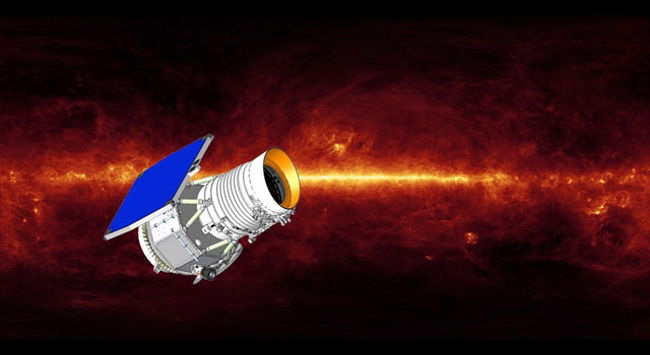
© NASANASA's sky-mapping spacecraft, the Wide-Field Infrared Survey Explorer (WISE)
A NASA space-based telescope that has been gathering imagery of comets, asteroids and distant galaxies since it was launched in December, received a last-minute reprieve in late September. Just as the hydrogen used to cool the detectors on the Wide-field Infrared Survey Explorer (WISE) ran out, the space agency's Planetary Division stepped forward with $400,000 to continue the mission, albeit in a limited manner, for one month, said NASA spokesman J.D. Harrington.
Without the hydrogen coolant, only two of the WISE mission's four infrared detectors will operate. However, those two detectors still will be useful in finding asteroids in the main belt between Mars and Jupiter and near-Earth objects, the asteroids and comets moving relatively close to Earth's orbit, said Ned Wright, WISE principal investigator and professor of physics and astronomy at the University of California, Los Angeles.
If the data from the extended mission, known as Near-Earth Object WISE (NEOWISE) proves useful, the Planetary Division will continue funding the effort to find near-Earth objects for three additional months, Harrington said.